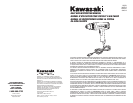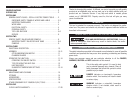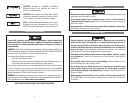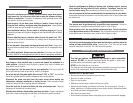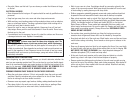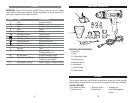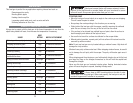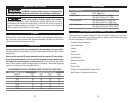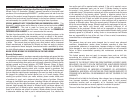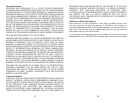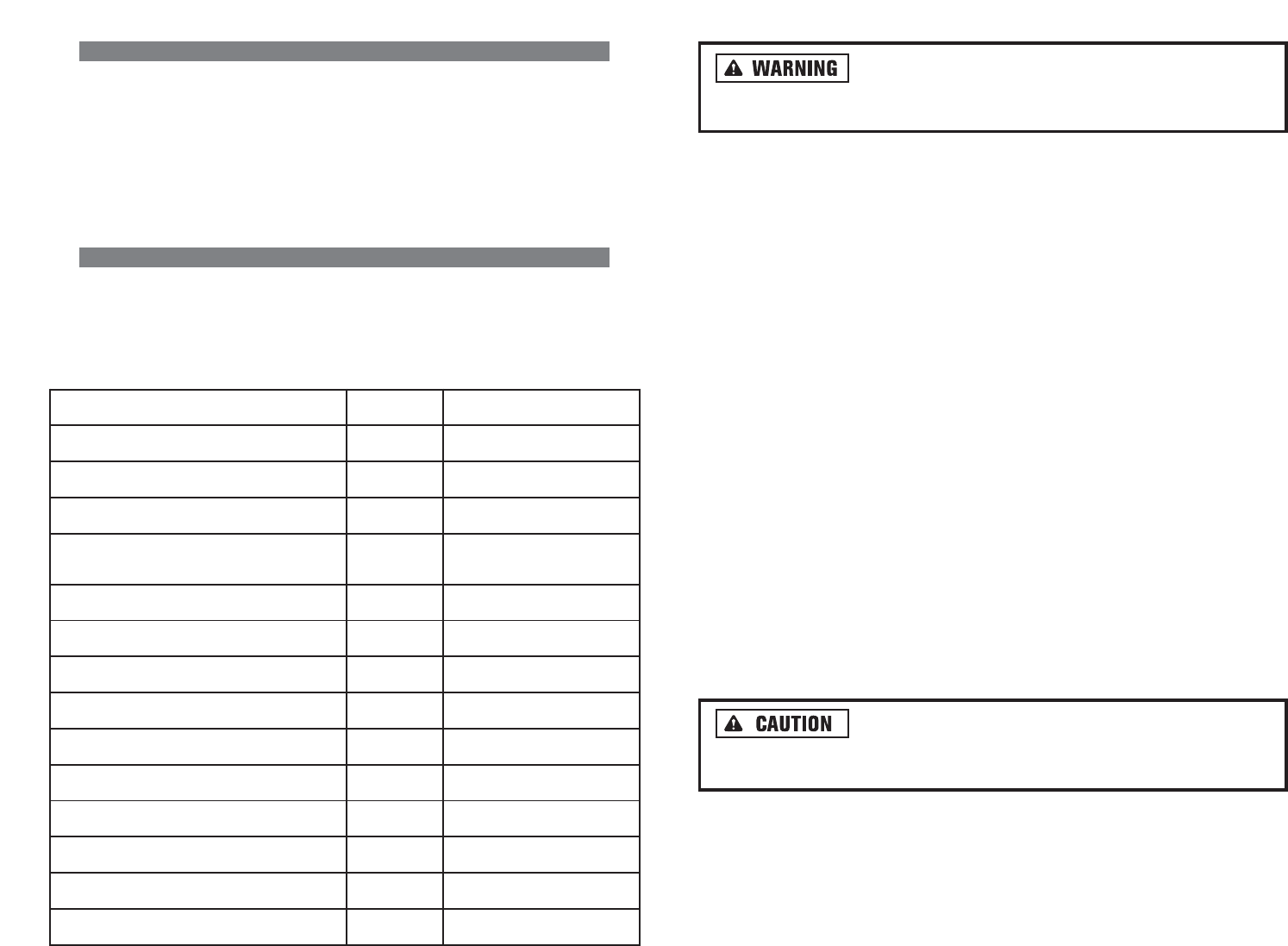
Nozzle and scraper blades will become extremely hot dur-
ing use. Do not touch nozzle or scraper blades with your bare hands or severe
burns will result. Always wear gloves when heat gun is in use.
STRIPPING PAINT
• Move the heat gun forward slowly at an angle to the surface you are stripping.
This will cause the paint to soften.
• Always keep the nozzle pointing in the direction you are moving.
• Follow behind the heat gun with the scraper, carefully removing the softened
paint. Be sure to keep out of the way of the hot air from the nozzle.
• If the surface to be stripped has multiple layers of paint, allow the surface to
heat thoroughly and remove all the layers at once.
• Use a soft wire brush for surfaces too delicate for the scraper blade.
• Mineral paints (porcelain, cement paint) will not soften with heat and must be
removed by another method.
Note: Do not use heat gun on vinyl-coated siding or window frames. High heat will
damage the vinyl surfaces.
Window frame putty softens under heat. When stripping window frames, be careful
not to damage the soft putty with the scraper. The putty will harden again once it
cools.
When stripping paint from fascia on a roof with asphalt shingles, do not let the heat
gun linger too long on the shingles themselves as this will melt the asphalt and
damage the shingles.
Never use this heat gun on laminated window glass. Heating laminated window
glass will cause the glass to expand, breaking the edge seals.
Always keep an ABC fire extinguisher or bucket of water
within reach while using heat gun. When used properly, the heat gun is safe, but
accidents happen and it is better to be prepared.
14
HEAT GUN USES
This heat gun is perfect for any application requiring intense heat such as:
Removing paint or putty
Bending plastic pipes
Heating shrink wrap film
Loosening rusted metal parts, such as nuts and bolts
Softening adhesive on floor tiles
SUGGESTED TEMPERATURE SETTINGS
Always start a project with the heat gun at the lowest temperature to see how the
object being heated will react, then increase the temperature if necessary.
HEAT
USAGE SETTING NOZZLE ATTACHMENT
13
Softening window putty (protect glass) High Air Reduction/Deflector
Stripping automotive paint High Air Reduction/Deflector
Removing formica or linoleum High No Attachment
Softening caulking High Air Reduction
Stripping urethane from
woodwork/furniture
Low Air Reduction/Deflector
Drying concrete /metal surfaces Low/High Air Reduction
Heating shrink wrap Low No Attachment
Defrosting frozen pipes Low Air Reduction
Shrinking window coverings Low No Attachment
Loosening rusted metal parts High No Attachment /Deflector
Bending plastic Low/High Air Reduction
Welding plastic High Air Reduction
Waxing skis Low No Attachment
Defrosting freezer High No Attachment
Soldering pipes High Air Reduction



